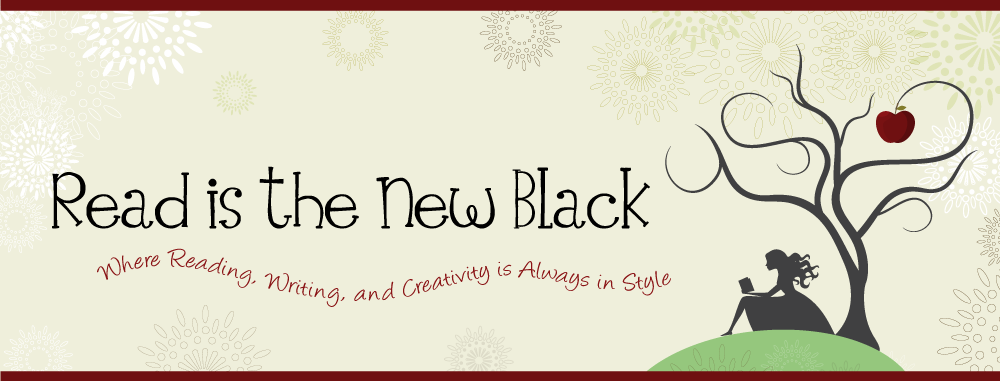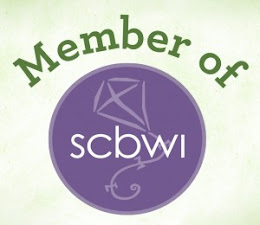Here's an interview with Chicago-born author Barb Rosenstock (barbrosenstock.com),who
has over a dozen books in
print. I’ve enjoyed three picture books written by
Barb-VAN GOGH PAINTS THE NIGHT SKY: VINCENT CAN’T SLEEP (Alfred
A. Knopf, Illust. by Mary
GrandPré),
THE COLORS AND SOUNDS OF KANDINSKY’S ABSTRACT ART: THE NOISY PAINT
BOX (Alfred A. Knopf, Illust. by Mary
GrandPré ) and
THOMAS JEFFERSON BUILDS A LIBRARY (Calkins Creek, Illust. by
John O’Brien).
 I
was intrigued to learn more about the beginnings of Washington D.C.'s
Library of Congress in THOMAS JEFFERSON BUILDS A LIBRARY. While you
celebrated Jefferson's achievements in the course of the story, you
shared in your author's note that Jefferson was a slaveholder. Here,
you expressed the irony that the man who wrote the Declaration of
Independence also withheld human freedom to African Americans.
What were the challenges of writing a biographical story of an
admired historical figure who was also responsible for unnoble
deeds?
I
was intrigued to learn more about the beginnings of Washington D.C.'s
Library of Congress in THOMAS JEFFERSON BUILDS A LIBRARY. While you
celebrated Jefferson's achievements in the course of the story, you
shared in your author's note that Jefferson was a slaveholder. Here,
you expressed the irony that the man who wrote the Declaration of
Independence also withheld human freedom to African Americans.
What were the challenges of writing a biographical story of an
admired historical figure who was also responsible for unnoble
deeds? 
VINCENT
CAN’T SLEEP (non-fiction) reveals Vincent Van Gogh’s
lifelong insomnia, the glimpses of light the darkness brought
him, and how his restlessness led him to paint the famous
“Starry Night.” THE NOISY PAINT BOX (historical
fiction) shows how, from a young age, Vasily Kandinsky would paint
the sounds he heard from the colors of his paints to create
his polychromatic abstract art. The author’s note
explained that it is believed Kandinsky had synesthesia, a
genetic condition where one bodily sense can activate
another sense. In THOMAS JEFFERSON BUILDS A LIBRARY
(non-fiction), I followed the story of the third president of the
United States, a voracious reader and book collector who went on to
organize the Library of Congress in Washington D.C.
How
did you start writing books?
I
studied pre-law at the University of Illinois; but switched to
psychology and graduated from Loyola University. Much later, I got my
Master’s Degree in education and student-taught 2nd grade. I
started writing books in order to do my lesson plans and wound up
with a writing career instead of teaching full-time. Writing
and school visits are the ways I teach.
I
find it interesting that in the author's note in THE NOISY PAINTBOX,
it's suggested that Vasily Kandinsky had synesthesia and this
condition could've triggered his artistic sensibilities. And in VINCENT CAN'T
SLEEP, Vincent Van Gogh's insomnia is a driving force in his story.
What are your thoughts about the idea that there could be a
connection between artistic brilliance and conditions that affect the
processes of the brain?
Wow!
Well that is a question best left to brain scientists! But in
my opinion, not so much. Reading Van Gogh’s letters it
struck me how much he was struggling against his
mental or physical illness(es) but still working on his art through
his pain. He might have even produced more, and grown more
artistically, had he more effective treatment in his day. It is my
view that all people (certainly children!) are intrinsically creative
and our most brilliant artists are just people who can hang onto that
openness and express it in some way.
 I
was intrigued to learn more about the beginnings of Washington D.C.'s
Library of Congress in THOMAS JEFFERSON BUILDS A LIBRARY. While you
celebrated Jefferson's achievements in the course of the story, you
shared in your author's note that Jefferson was a slaveholder. Here,
you expressed the irony that the man who wrote the Declaration of
Independence also withheld human freedom to African Americans.
What were the challenges of writing a biographical story of an
admired historical figure who was also responsible for unnoble
deeds?
I
was intrigued to learn more about the beginnings of Washington D.C.'s
Library of Congress in THOMAS JEFFERSON BUILDS A LIBRARY. While you
celebrated Jefferson's achievements in the course of the story, you
shared in your author's note that Jefferson was a slaveholder. Here,
you expressed the irony that the man who wrote the Declaration of
Independence also withheld human freedom to African Americans.
What were the challenges of writing a biographical story of an
admired historical figure who was also responsible for unnoble
deeds? 
I
started the book with a note on his family’s slaveholding and ended
it with one. But the book’s narrative itself was about his library,
not his plantation or his gardening or his politics or his wine
collection, only his
library. That is the biggest challenge of writing a picture book vs.
other genres: the author must stick with a tight theme or the book
won’t work. Though obviously his slaveholding affected everything
and everyone around him; it wasn't expressly the topic
of this short narrative. Jefferson was notoriously private about
his books, no one else was allowed in his library. So, working with
experts, there wasn't an authentic way to write about individuals
enslaved by Jefferson working with his books. Throughout
the illustrations, John O’Brien had more leeway to show Jefferson’s
slaves working and living their lives. But yes, it was a challenge
and is hopefully handled as well as the author, illustrator,
editor and publisher can at the time.
As
I scan the list of books you've written, I notice you have an
interest in history and art (also subjects I'm interested in). How
did you start writing books on these subjects? Did you work in
another industry before becoming a published author?
I
had a long career in marketing and advertising management before even
thinking of writing. But I’ve always loved history. I don’t
think I really write about anything else because I’m not always
sure there IS anything else. Everything's story, everyone’s
story is hi-story, whether it's about art, science, music,
politics, nature, athletics, construction, etc. My grandpa loved to
tell stories about Chicago’s past, the people he met, and his
immigrant family’s experiences. One of my latest books, OTIS &
WILL DISCOVER THE DEEP, is about science history, and I can hear my
grandfather’s voice in the writing choices I made. If you ask a
group of kids if they like history, maybe two hands go up; but if you
ask them if they like when someone in their family tells stories
about the past, like 98% of the hands go up. I’m trying to do
the latter.
I
like the way you made history come alive in your books. What are your
tips for presenting history or historical fiction in a way that
engages young readers?
See
Grandpa above. I really just try to “tell” a story, the way I
would say it out loud. I find something that engages
me— like that a poor, cross-eyed kid started
a whole genre of music (BLUE GRASS BOY) or that a refugee rebuilt his
village with recycled materials and hid it in the jungle for years
(THE SECRET KINGDOM.) I hope that my engagement translates to kids.
Though I know kids (and teachers) are my typical audience, I never
want to be writing “down,” since I hated that
as a child. I remember wanting to hear the “real story" and
then just having the opportunity to ask questions if there was
anything I didn’t understand. I think kids are way more capable
than adults assume.
I
don’t know if it was my own interest or because both my public and
school library did not have many new children's books, but they’re
all old historical fiction titles: The BETSY-TACY series by
Maud Hart Lovelace, BALLET SHOES/ THEATRE SHOES by Noel
Streatfield and THE FIVE LITTLE PEPPERS AND HOW THEY GREW by
Margaret Sidney. I still have the few childhood favorites I was lucky
enough to own, such as: HARRIET THE SPY (Louise
Fitzhugh), CANDY FLOSS (Rumor Godden), JUDY’S
JOURNEY (Lois Lenski) and MAGIC ELIZABETH (Norma
Kassirer).
Are
there any upcoming projects you’d like to talk about?
I
always like to learn new things and share them with the students
and teachers who read and use my books. I have a new baseball book
coming out, YOGI! THE LIFE, LOVES AND LANGUAGE OF BASEBALL LEGEND
YOGI BERRA (Calkins Creek, February, 2019) That’s followed by
PRAIRIE BOY (Calkins, September, 2019) about the shapes
that influenced American architect Frank Lloyd Wright and FIGHT OF
THE CENTURY (Calkins, Spring, 2020) on the struggle for women’s
voting rights for the 100th anniversary of the 19th amendment. LEAVE
IT TO ABIGAIL (Little Brown, Fall, 2020) on Abigail Adams'
contributions to our country. And finally Mary Grandpré and I have
teamed up for a fourth artist biography called MORNINGS WITH MONET
(Knopf, Spring, 2021) I hope everyone enjoys them!


















